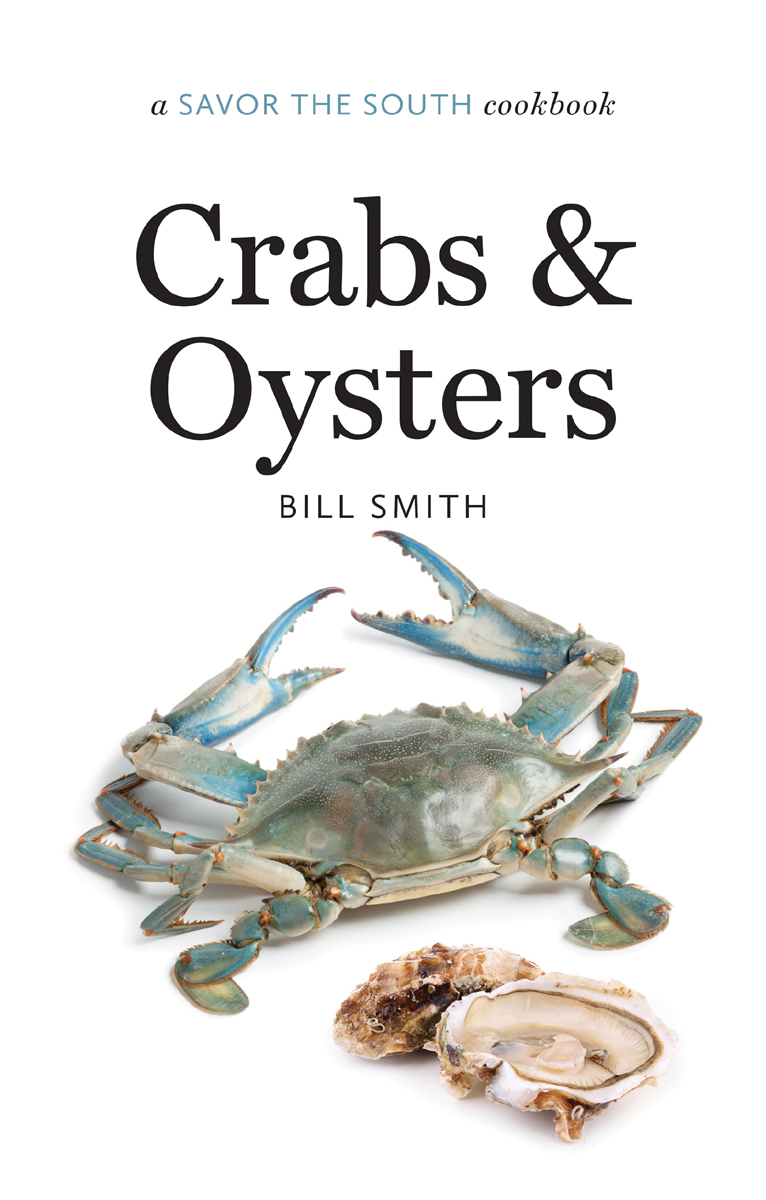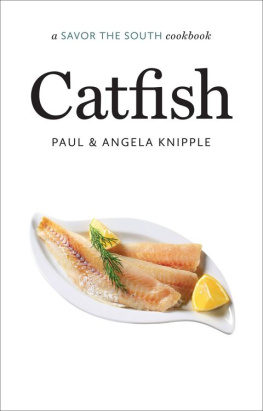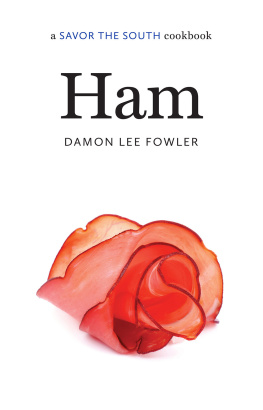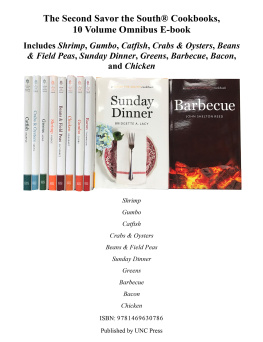Bill Smith - Crabs & Oysters: A Savor the South Cookbook
Here you can read online Bill Smith - Crabs & Oysters: A Savor the South Cookbook full text of the book (entire story) in english for free. Download pdf and epub, get meaning, cover and reviews about this ebook. year: 2015, publisher: The University of North Carolina Press, genre: Home and family. Description of the work, (preface) as well as reviews are available. Best literature library LitArk.com created for fans of good reading and offers a wide selection of genres:
Romance novel
Science fiction
Adventure
Detective
Science
History
Home and family
Prose
Art
Politics
Computer
Non-fiction
Religion
Business
Children
Humor
Choose a favorite category and find really read worthwhile books. Enjoy immersion in the world of imagination, feel the emotions of the characters or learn something new for yourself, make an fascinating discovery.

- Book:Crabs & Oysters: A Savor the South Cookbook
- Author:
- Publisher:The University of North Carolina Press
- Genre:
- Year:2015
- Rating:3 / 5
- Favourites:Add to favourites
- Your mark:
- 60
- 1
- 2
- 3
- 4
- 5
Crabs & Oysters: A Savor the South Cookbook: summary, description and annotation
We offer to read an annotation, description, summary or preface (depends on what the author of the book "Crabs & Oysters: A Savor the South Cookbook" wrote himself). If you haven't found the necessary information about the book — write in the comments, we will try to find it.
Bill Smith: author's other books
Who wrote Crabs & Oysters: A Savor the South Cookbook? Find out the surname, the name of the author of the book and a list of all author's works by series.
Crabs & Oysters: A Savor the South Cookbook — read online for free the complete book (whole text) full work
Below is the text of the book, divided by pages. System saving the place of the last page read, allows you to conveniently read the book "Crabs & Oysters: A Savor the South Cookbook" online for free, without having to search again every time where you left off. Put a bookmark, and you can go to the page where you finished reading at any time.
Font size:
Interval:
Bookmark:


a SAVOR THE SOUTH cookbook
Crabs & Oysters
SAVOR THE SOUTH cookbooks
Crabs and Oysters, by Bill Smith (2015)
Sunday Dinner, by Bridgette A. Lacy (2015)
Beans and Field Peas, by Sandra A. Gutierrez (2015)
Gumbo, by Dale Curry (2015)
Shrimp, by Jay Pierce (2015)
Catfish, by Paul and Angela Knipple (2015)
Sweet Potatoes, by April McGreger (2014)
Southern Holidays, by Debbie Moose (2014)
Okra, by Virginia Willis (2014)
Pickles and Preserves, by Andrea Weigl (2014)
Bourbon, by Kathleen Purvis (2013)
Biscuits, by Belinda Ellis (2013)
Tomatoes, by Miriam Rubin (2013)
Peaches, by Kelly Alexander (2013)
Pecans, by Kathleen Purvis (2012)
Buttermilk, by Debbie Moose (2012)
2015 William B. Smith Jr.
All rights reserved. Manufactured in the United States of America.
SAVOR THE SOUTH is a registered trademark of the
University of North Carolina Press, Inc.
Designed by Kimberly Bryant and set in Miller and
Calluna Sans types by Rebecca Evans.
The paper in this book meets the guidelines for permanence and durability of the Committee on Production Guidelines for Book Longevity of the Council on Library Resources. The University of North Carolina Press has been a member of the Green Press Initiative since 2003.
Jacket illustration: oyster, istock.com/margouillatphotos; crab, Ingram Image/Picturpartners
Library of Congress Cataloging-in-Publication Data
Smith, Bill, 1949 January 11
Crabs & oysters / Bill Smith.1 [edition].
pages cm.(Savor the South cookbooks)
Includes bibliographical references and index.
ISBN 978-1-4696-2262-0 (cloth : alk. paper)
ISBN 978-1-4696-2263-7 (ebook)
1. Cooking (Crabs) 2. Cooking (Oysters) 3. Cooking, American
Southern style. I. Title. II. Title: Crabs and oysters.
TX754.C83S65 2015 641.695dc23
2015006183
Frances and Ed Mayess Spaghetti with Lemon and Crab recipe from The Tuscan Sun Cookbook: Recipes from Our Italian Kitchen, by Frances Mayes and Edward Mayes, 2012. Used by permission of Clarkson Potter/Publishers, an imprint of the Crown Publishing Group, a division of Random House LLC. All rights reserved.
Jean Andersons Stuffed Crab au Gratin (Santola Recheada e Gratinada) recipe from The Food of Portugal, by Jean Anderson 1986, 1994 by Jean Anderson. Reprinted by permission of HarperCollins Publishers and McIntosh & Otis, Inc.
To the memory of all of those
glorious meals we had at the beach and to
the people who cooked them

a SAVOR THE SOUTH cookbook
Crabs & Oysters
Legend has it that the author Colettes system had become so delicate by the time she died that she could have only oysters and champagne. I hope this happens to me.
I grew up in eastern North Carolina catching crabs, cleaning fish, and shucking oysters. I loved the beach. Still do. Today when I look back, the best memories I have of those times always include something to do with food and the beach. In the summer, my family and I would often go down to the beach after church and spend the day, and even though we only lived thirty minutes from the ocean, we would still take a beach cottage for at least a week sometime in July or August. The ocean and the coast were so much a part of our lives that we never really considered going anywhere else. People from eastern North Carolina are like that. I hope to share some of this vibe with you in the recipes here.
When I was five or six years old, I would go on Sunday afternoon rides with my fathers brother, Alex, and his wife, Hi. These excursions usually included lunch. One of our favorite places was a seafood restaurant in the town of Sea Level in Carteret County. On one such afternoon, I ordered soft-shell crabs. My aunt Hi was sure that I had meant deviled crabs, but I wouldnt change my order. (Deviled crabs are mildly spicy crabmeat baked in the crabs shell. Soft-shell crabs are the whole beast minus the face and the guts, fried crispy, and eaten shell and all.) She ordered deviled crab just in case. When lunch came, she had in fact been right. I had meant deviled, but of course I wouldnt admit it and the rest is history. To this day soft-shell crabs are one of my favorite foods.
Part of my family is Roman Catholic, so Fridays put seafood on the table every week. This was in the days before Vatican II when meat was forbidden to us on that day as a small bit of penance. Fridays were fish days. A strange idea of punishment I thought to myself, but then Ive always been impious.
In New Bern in the 1950s our two rivers were lined with crab factories. These were small crab-packing houses where you could buy crabs and crabmeat. Mostly, though, we caught our own with chicken necks tied on string. All you had to do was slowly coax the crabs near to the surface of the water and scoop them up with a net. They were ridiculously easy to catch. Crabs were essentially free food. We learned to clean and pick them ourselves.
Oysters were more often gifts. My father worked for the post office, and for a time his route was in rural and maritime Pamlico County, which has a long coast of marshes and bays. In those days people gave gifts to the mailman, so besides the pia colada cakes, corn, or homemade sausage, we sometimes received a bushel of oysters. Strangely, oysters will keep out of the water, under wet burlap, in a cool, dark place for a long time. I remember baskets of these in our basement. The health department says never to do this, of course. (See the instructions for storing oysters later in this chapter.)
We learned early to eat them roasted. Backyard oyster roasts were held in good weather. People built permanent pits, not for barbecue, but for oysters. You soon learned to dodge the smoke and not to burn your fingers as you helped yourself. You could of course have raw oysters as well. At oyster parties, my uncle Alex would delight and terrify us at the same time by also eating the tiny crabs that either scurry out of freshly shucked oysters or dont out of roasted ones. These tiny pea crabs were once a commercial product. In the March 20, 1893, edition of the New York Times there is reference to an oyster crab salad.
I have retained the r-month prejudice against eating oysters in warm weather (that is, oysters should be eaten only during months that contain the letter r). Its the way we were raised, I guess, plus by summer they have become too big for my taste. Having said all this, I always eat them when Im in New Orleans whatever the time of year or whatever their size. Its almost always warm there, and a trip to Casamentos is always in season.
This is a southern book by definition, and the South has a long seacoast. Nine of the states of the old Confederacy have shorelines. Add in Maryland (some do, some dont) and there is a lot of ground, or perhaps water, to cover. And so while North Carolina will figure heavily in this work, Ive looked all over the South for things to include. A large part of what Ive discovered has been found in church and community cookbooks. Ive come to feel that these are the true repositories of southern cooking culture. This research has been delightful, and I have learned a great deal more than I would have imagined at the start. I will never forget how to spell Worcestershire, for instance. It is in everything. There are a host of sensible but forgotten techniques that come up again and again in these old books. Several people use a double boiler rather than a skillet to soften peppers and onions before they are incorporated into a dish. Beurre mani, used to thicken or finish sauces, shows up a lot. You rarely see it called for today, although it works like a charm. Sometimes the descriptive language is too good to be true. Take a knob of butter the size of a walnut comes to mind.
Font size:
Interval:
Bookmark:
Similar books «Crabs & Oysters: A Savor the South Cookbook»
Look at similar books to Crabs & Oysters: A Savor the South Cookbook. We have selected literature similar in name and meaning in the hope of providing readers with more options to find new, interesting, not yet read works.
Discussion, reviews of the book Crabs & Oysters: A Savor the South Cookbook and just readers' own opinions. Leave your comments, write what you think about the work, its meaning or the main characters. Specify what exactly you liked and what you didn't like, and why you think so.




